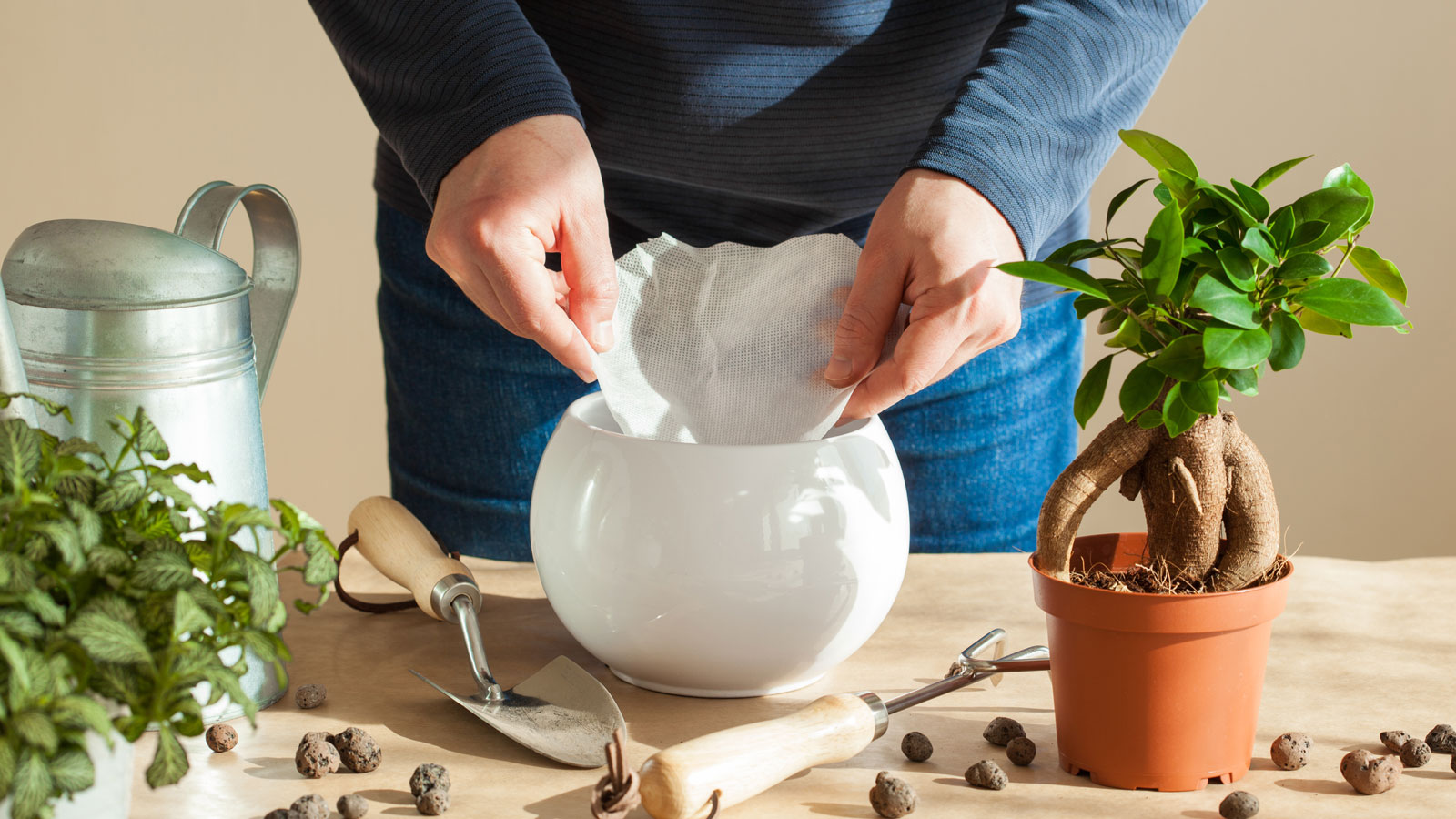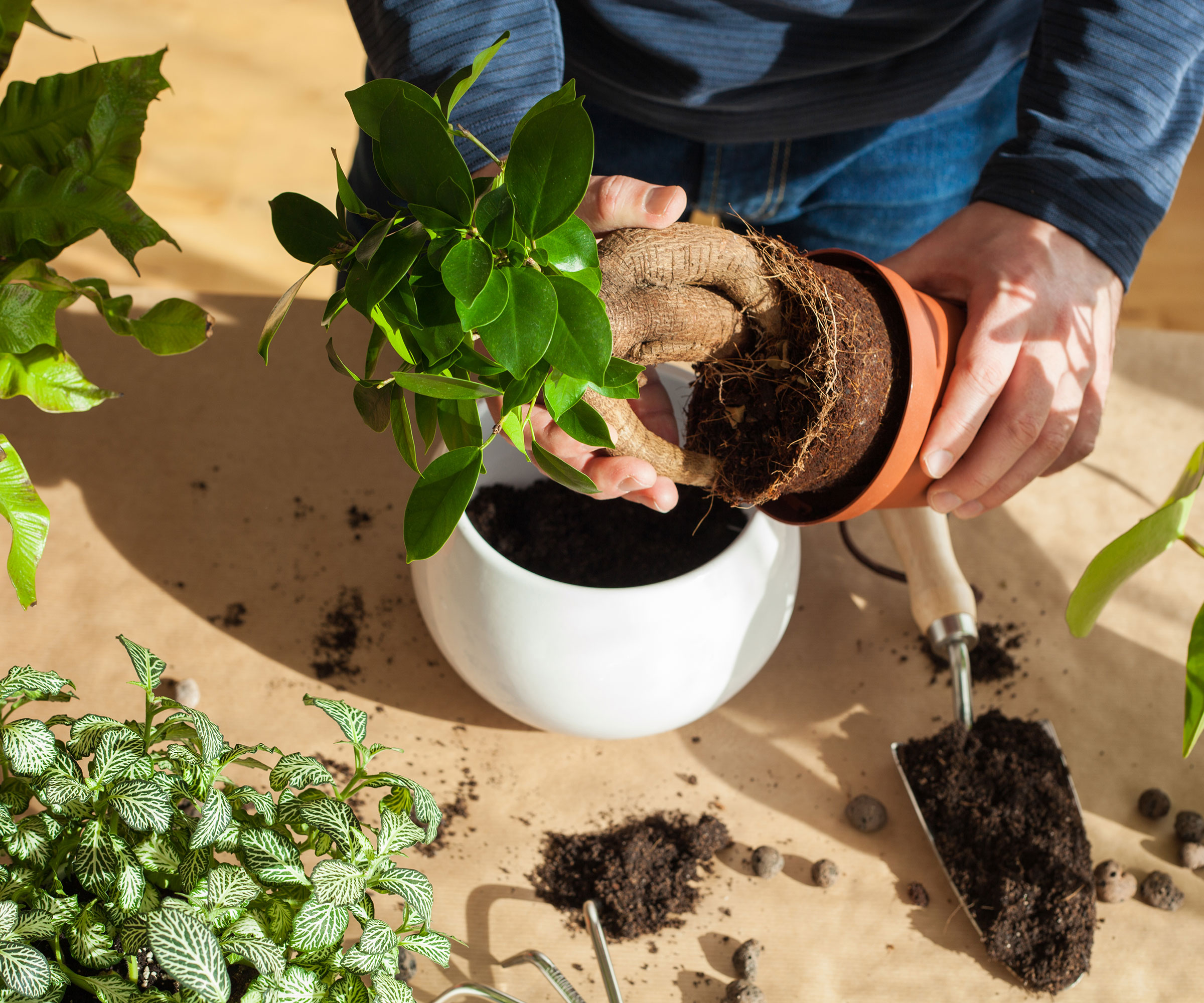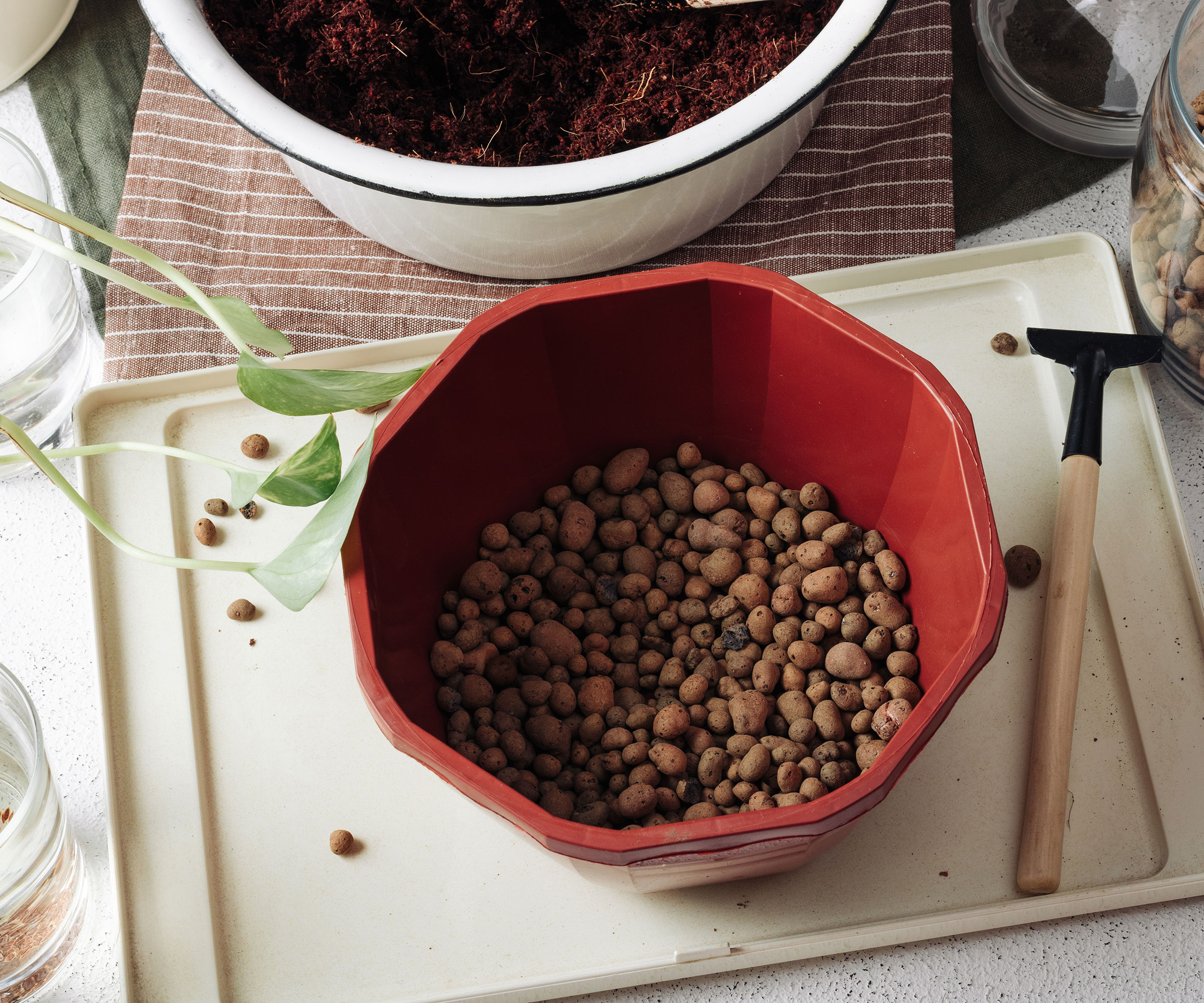Why You Should Put A Coffee Filter In The Bottom Of Your Plant Pot
If you’ve ever wondered why you should put a coffee filter in the bottom of your plant pot, here’s your chance to find out how it can be of greater service


Many of us are searching for ways to repurpose once discarded items, so why not use a coffee filter in the bottom of your plant pot? Utilizing a coffee filter for plants is a trendy solution to losing your potting soil. It actually makes some sense, and is a great way to use a spent item without clogging up the landfills.
It’s good to know that it isn’t just the coffee grounds that can be used to give your plants a lift! The ‘coffee filter in bottom of flower pot’ trick is a double win solution that can only be a good thing. Find out why it can benefit your plants.

Why Put a Coffee Filter in the Bottom of a Flower Pot?
The idea of a coffee filter plant pot drain hole cover probably stemmed from someone who hated the thought of tossing out the filter every day. It is also a way to circumvent the common wisdom of putting a layer of gravel in the bottom of a container. This garden myth has proven to be unwise because it allows moisture to accrue on the sides of the container instead of moving through the drainage hole.
We all know a container needs a drainage hole to help excess moisture evacuate from the pot. Without some drainage, plant roots will sit in that excess water and rot. But when that extra moisture moves through the hole, it takes with it some of the potting medium. Over time, the soil level is depleted and the plant will be sitting too high. Without enough soil to hold moisture and nutrients, the plant health can suffer.
This is solved when you repot, but repotting frequently disturbs plant roots and causes stress. So figuring out how to keep that soil in the container can be solved by a coffee filter in flower pot drainage areas. Using a coffee filter in a plant pot avoids waste, keeps that soil inside, and is a natural, compostable solution.

Don’t Drink Coffee? Try These Other Options
If your beverages do not include those of the caffeinated variety, using a coffee filter in flower plant pot drainage holes is not an option. Gardeners have used many things to slow percolation in a container. Gravel is common, although not wise, but so are many other things.
Porous items like landscape fabric, newspaper, compostable packing material, coconut coir, pine cones, wood chips, peat moss or even a paper towel will keep the soil inside the container while allowing excess water to leave. These freely draining types of materials allow the water to leach out accumulated salts and build ups to preserve soil and plant health. So if you aren’t a coffee drinker and the filter idea isn’t an option, try some of these other items.
Sign up for the Gardening Know How newsletter today and receive a free copy of our e-book "How to Grow Delicious Tomatoes".
What Not to Put in the Bottom of Pots
Even though we are often instructed to put certain things in the bottom of plant containers, some of them are a bad idea. Water will follow gravity from the top of the pot to the bottom. When you put inorganic, non-porous items like rock in the bottom, there is less soil to conduct that movement. There is also less soil for the plant roots to grow into. The diminished soil actually means water will remain at the bottom of the container.
This makes a waterlogged base of the pot where any roots will sit in too much moisture. This causes root rots and makes for a stinky container. So rocks and gravel are a no-no. Items like a layer of perlite or vermiculite might seem like a good idea. They are often part of potting soils and contribute to drainage, but they also hold moisture. So if there is a layer of these materials at the bottom of the container they will retain moisture, which can adversely affect root health.

How Else to Use Coffee Filters in the Garden
If you have covered all your container holes with coffee filters but the filters keep coming, use them up in these other ways. Coffee filters around veggie plants will reduce weed growth, conserve moisture and help regulate soil temperatures. They are essentially performing as a mulch. They will compost into the ground naturally. Rip up coffee filters and add them to your compost pile. They will add carbon which is necessary for balanced compost production.
Finally, start your seeds in used coffee filters. Dampen them and put the seed inside, folding the filter over. Place the filter in a plastic bag and seal it. Open it daily to allow excess moisture to evaporate. Moisten the filter as needed. In time, the seeds will germinate and are ready for planting.

Bonnie Grant is a professional landscaper with a Certification in Urban Gardening. She has been gardening and writing for 15 years. A former professional chef, she has a passion for edible landscaping.